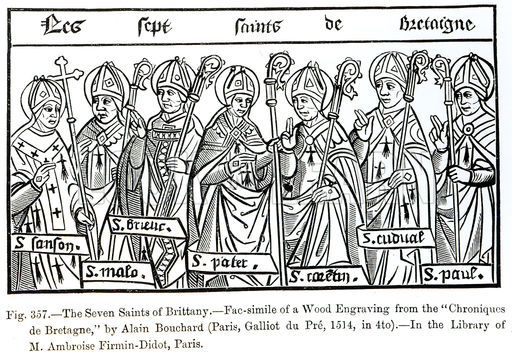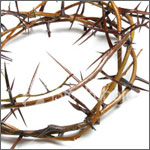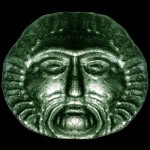The Seven Founder Saints of Brittany
WordPress database error: [Incorrect DATE value: '']
SELECT * FROM wp_gigpress_artists AS a, wp_gigpress_venues as v, wp_gigpress_shows AS s LEFT JOIN wp_gigpress_tours AS t ON s.show_tour_id = t.tour_id WHERE show_related = 42 AND show_expire != '' AND show_status != 'deleted' AND s.show_artist_id = a.artist_id AND s.show_venue_id = v.venue_id ORDER BY show_date asc,show_expire asc,show_time asc
Sometimes, two—or more—saints are better than one. So goes the reasoning behind the simultaneous veneration of saints. In cases of emergency, several saints working together in harmony on your behalf offers peace of mind as well as the assurance that your needed miracle is likely to be received. Smaller and larger groups exist—as for instance, the Fourteen Holy Helpers—but seven is widely considered a magical number and groups of seven saints are customary. Two such groupings—the Seven African Powers and the Seven Saints of Marrakesh—are discussed in The Encyclopedia of Myths, Saints, and Sages, but others exist, too, such as the Seven Founder Saints of Brittany.
The first seven officially acknowledged Christian missionaries to arrive in Brittany are categorized together as the Seven Founder Saints. What these Celtic monks from Britain founded was the Church. Although each saint is also venerated independently, they are invoked together as a group, especially as part of a traditional Breton pilgrimage ritual.
The Seven Founder Saints include:
- Saint Pol Aurelian whose shrine is at Saint-Pol-de-Léon
- Saint Tudwal whose shrine is at Tréguier
- Saint Brioc whose shrine is at Saint-Brieuc
- Saint Malo whose shrine is at Saint-Malo
- Saint Samson whose shrine is at Dol-de-Bretagne
- Saint Patern whose shrine is at Vannes
- Saint Corentin whose shrine is at Quimper
- An eighth saint, the scholar and miracle-worker, Saint Gildas is often venerated alongside the official seven.
The ritual is known as the Tro Breizh, which literally means “tour of Brittany” in the Breton language. Pilgrims walk from one saint’s grave shrine to another, essentially taking a tour around Brittany. This is the traditional pilgrimage route:
- Quimper
- Saint-Pol-de-Léon
- Tréguier
- Saint-Brieuc
- Saint-Malo
- Dol-de-Bretagne
- Vannes
The first documented reference to this pilgrimage is from the 13th century. At that time, an approximately 600 kilometer trip was traditionally completed in one trip that lasted about one month. In the modern era, not too many people can devote an entire month or longer to a pilgrimage and so, in 1994, when the pilgrimage was officially re-launched, it was suggested that it be limited to one week annually and thus completed over the course of seven years. A Breton legend suggests that whoever does not make the Tro Breizh at least once in his or her lifetime will be condemned to perform it after death, but moving only the length of one’s coffin every seven years.
The concept of the benefits of venerating compatible spirits en masse is not unique to Christianity or Christian-influenced traditions. They exist elsewhere, too, as for instance with Japan’s Seven Spirits of Good Fortune (Shichi Fukujin) and China’s Eight Immortals.
- More information about these spirits can be found in The Encyclopedia of Spirits.
- Information about other Breton saints, including the very popular Saint Yves (Ivo) is in The Encyclopedia of Mystics, Saints, and Sages.



